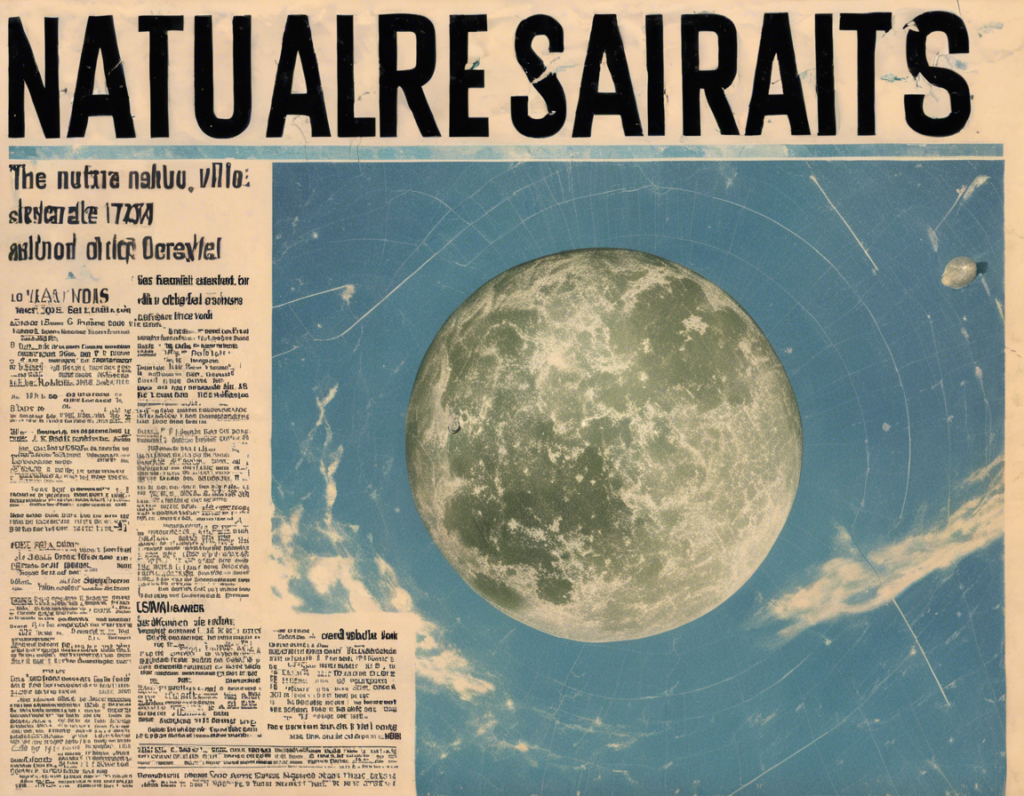In the vast universe we reside in, there are countless celestial bodies, including planets, stars, moons, and asteroids. Natural satellites, commonly known as moons, play a vital role in our understanding of the solar system and beyond. Moons come in various shapes and sizes, and recent advancements in technology have enabled scientists to make fascinating discoveries about these enigmatic objects. Let’s delve into some of the new discoveries in natural satellites that have piqued the interest of astronomers and space enthusiasts alike.
Formation and Composition
Natural satellites are believed to form through different mechanisms, such as capture, co-formation, or giant impacts. One recent discovery has shed light on the formation of moons around extrasolar planets. Scientists have found evidence suggesting that moons can form from the debris disks around young giant planets, similar to how planets form around stars. This discovery expands our understanding of moon formation beyond our solar system.
Additionally, studies of the composition of moons have revealed intriguing findings. For example, recent observations of Europa, one of Jupiter’s moons, have provided strong evidence of a subsurface ocean beneath its icy crust. This discovery raises the possibility of habitability on Europa, as liquid water is a key ingredient for life as we know it. The presence of subsurface oceans on moons like Europa opens up new avenues for the search for extraterrestrial life in our solar system.
Geological Activity
The study of geological activity on moons has also led to exciting revelations. One of the most remarkable recent discoveries is the detection of cryovolcanoes on several moons in the outer solar system. Cryovolcanism involves the eruption of volatile substances such as water, ammonia, or methane instead of molten rock. For instance, Enceladus, a moon of Saturn, exhibits geysers of water vapor and ice particles erupting from its south pole, indicating a subsurface ocean and active geological processes. Understanding cryovolcanism provides valuable insights into the interior dynamics of these icy moons and their potential for hosting life.
Another example of geological activity on moons is the presence of tectonic features. Moons like Io, a volcanic moon of Jupiter, and Titan, Saturn’s largest moon, display an array of tectonic landforms, including mountains, valleys, and faults. Recent studies have unveiled the complex interplay between tidal forces from their parent planets and internal heating mechanisms in shaping these tectonic features. Exploring the geological activity on moons offers a glimpse into the diverse processes at work in our solar system.
Exoplanet Moons
As astronomers continue to identify exoplanets in distant star systems, the search for exomoon candidates has gained momentum. While the detection of exomoons poses significant challenges due to their small size and faint signals, recent advancements have hinted at the possible existence of these elusive objects. One intriguing discovery involves the identification of potential exomoon transits, where the dip in brightness observed during a planet’s transit may be partially influenced by the presence of a moon. The study of exomoon candidates opens up new avenues for understanding the diversity of moons beyond our solar system and their role in planetary systems.
Future Prospects
Looking ahead, ongoing and future missions to explore moons in our solar system hold great promise for uncovering further insights into these intriguing worlds. For instance, NASA’s upcoming Europa Clipper mission aims to study Europa up close, investigating its icy surface, subsurface ocean, and potential habitability. Similarly, the Dragonfly mission by NASA will explore Titan’s unique environment using a rotorcraft to fly across its surface, shedding light on its organic chemistry and prebiotic conditions. These missions represent exciting opportunities to deepen our understanding of moons and their significance in the cosmic tapestry.
FAQs
- What is the largest moon in the solar system?
-
Answer: Ganymede, a moon of Jupiter, holds the title of the largest moon in the solar system.
-
Can moons have atmospheres?
-
Answer: Yes, some moons like Titan have dense atmospheres composed of nitrogen and other organic compounds.
-
Are there any moons with magnetic fields?
-
Answer: Yes, Ganymede and Callisto have weak magnetic fields, likely generated by subsurface oceans.
-
Which moon shows evidence of past volcanic activity?
-
Answer: Io, the innermost moon of Jupiter, is one of the most volcanically active worlds in the solar system.
-
Do all moons orbit planets?
-
Answer: No, some moons, known as dwarf moons, orbit asteroids or dwarf planets instead of planets.
-
Can moons support life?
-
Answer: Moons with subsurface oceans, such as Europa and Enceladus, are considered potential candidates for hosting microbial life.
-
How do astronomers study the composition of moons?
-
Answer: Astronomers use a variety of techniques, including spectroscopy and direct sampling by spacecraft, to analyze the composition of moon surfaces and atmospheres.
-
Why are moons important in the study of planetary formation?
-
Answer: Moons offer insights into the conditions and processes that shaped their parent planets, providing clues about the early evolution of planetary systems.
-
What is the difference between a moon and a satellite?
-
Answer: A moon is a natural satellite that orbits a planet, whereas a satellite can refer to both natural and artificial objects orbiting a larger body.
-
How do moons influence their parent planets?
- Answer: Moons can affect the rotation, tides, and magnetic fields of their parent planets through gravitational interactions, showcasing the dynamic interplay within planetary systems.
In conclusion, the latest discoveries in natural satellites have unveiled a diverse array of worlds with unique characteristics and scientific significance. From the formation and composition of moons to their geological activity and potential for harboring life, ongoing research continues to deepen our understanding of these captivating objects in our cosmic neighborhood and beyond. As exploration missions push the boundaries of discovery, we can anticipate further breakthroughs that will enrich our knowledge of moons and their role in the grand tapestry of the universe.
